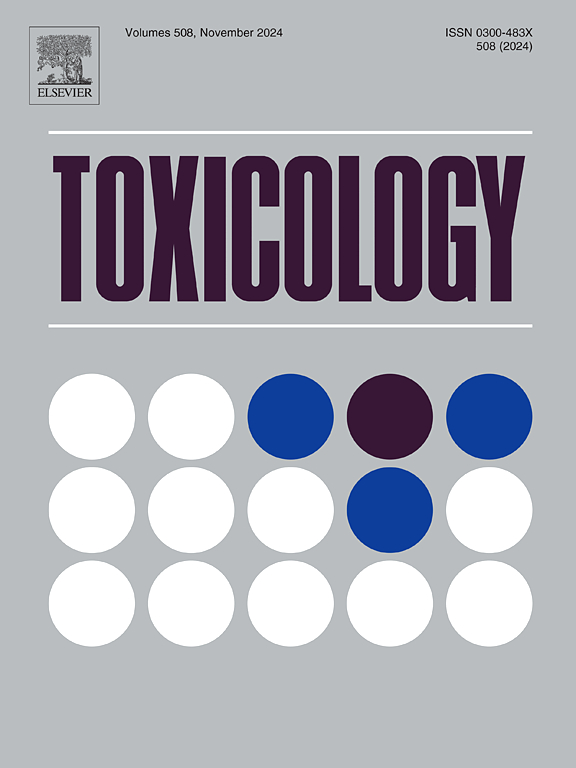An In Vitro test battery using human whole blood for immunotoxicity hazard identification: Proof of concept studies with dexamethasone and benzo(a)pyrene
IF 4.8
3区 医学
Q1 PHARMACOLOGY & PHARMACY
引用次数: 0
Abstract
Immunotoxicity assessment is nearing a crossroads predicated on mounting pressure for reduction/replacement of animals in toxicology. This has fueled the development of alternative New Approach Methodologies (NAMs) for hazard identification. This work details a comprehensive human whole blood NAM battery for immunotoxicity testing. The test system is a closed tube culture containing whole blood diluted 1:3 in culture media with or without an immune stimulant, anti-CD3/CD28 or viral peptide pool. Model immunotoxicants dexamethasone (DEX; 0 – 1.94 μM) and benzo(a)pyrene [B(a)P; 0–6.3 μM], were added to the test system for 24 hours. Immune cells were identified and counted by flow cytometric immunophenotyping and assessed for natural killer (NK) cell activity and T cell activation. Supernatants were interrogated for proinflammatory cytokine concentrations. In vitro treatment with DEX resulted in concentration-dependent suppression of cytokine production, NK cell activity, and T cell activation induced by anti-CD3/CD28, as well as viral-induced cytokine production. B(a)P caused suppression of cytokine production and a nonsignificant reduction in T cell activation but did not impact NK cell activity, however, immunosuppression by B(a)P only occurred following metabolic activation by S9 fraction enzymes. Advantages of this NAM battery include assessment of adaptive immunity and direct translation of immunotoxicity to viral host resistance. These results provide evidence of in vitro immunotoxicity that reflect known outcomes from in vivo studies. This multi-endpoint human whole blood NAM battery should be useful for screening compounds for immunotoxicity hazard identification without reliance on animal systems for increased translatability to humans.
使用人全血进行免疫毒性危险鉴定的体外试验电池:地塞米松和苯并(a)芘的概念验证研究
免疫毒性评估正接近一个十字路口,这是基于在毒理学中减少/替代动物的压力越来越大。这推动了危害识别替代新方法方法(NAMs)的发展。本工作详细介绍了一种用于免疫毒性测试的全面的人全血NAM电池。测试系统是一个封闭的试管培养,含有1:3稀释的全血,培养基中有或没有免疫刺激剂,抗cd3 /CD28或病毒肽池。模型免疫毒物地塞米松;0 ~ 1.94 μM)和苯并(a)芘[B(a)P;0 ~ 6.3 μM],加入测试系统中,静置24 小时。免疫细胞通过流式细胞术免疫表型鉴定和计数,并评估自然杀伤(NK)细胞活性和T细胞活化。上清检测促炎细胞因子浓度。DEX体外处理对细胞因子产生、NK细胞活性、抗cd3 /CD28诱导的T细胞活化以及病毒诱导的细胞因子产生具有浓度依赖性的抑制作用。B(a)P引起细胞因子产生的抑制和T细胞活化的不显著降低,但不影响NK细胞活性,然而,B(a)P的免疫抑制仅在S9部分酶的代谢激活后发生。该NAM电池的优点包括适应性免疫评估和对病毒宿主耐药性的免疫毒性的直接翻译。这些结果提供了体外免疫毒性的证据,反映了体内研究的已知结果。这种多终点人全血NAM电池可用于筛选用于免疫毒性危险鉴定的化合物,而不依赖于动物系统,以增加对人类的可翻译性。
本文章由计算机程序翻译,如有差异,请以英文原文为准。
求助全文
约1分钟内获得全文
求助全文
来源期刊

Toxicology
医学-毒理学
CiteScore
7.80
自引率
4.40%
发文量
222
审稿时长
23 days
期刊介绍:
Toxicology is an international, peer-reviewed journal that publishes only the highest quality original scientific research and critical reviews describing hypothesis-based investigations into mechanisms of toxicity associated with exposures to xenobiotic chemicals, particularly as it relates to human health. In this respect "mechanisms" is defined on both the macro (e.g. physiological, biological, kinetic, species, sex, etc.) and molecular (genomic, transcriptomic, metabolic, etc.) scale. Emphasis is placed on findings that identify novel hazards and that can be extrapolated to exposures and mechanisms that are relevant to estimating human risk. Toxicology also publishes brief communications, personal commentaries and opinion articles, as well as concise expert reviews on contemporary topics. All research and review articles published in Toxicology are subject to rigorous peer review. Authors are asked to contact the Editor-in-Chief prior to submitting review articles or commentaries for consideration for publication in Toxicology.
 求助内容:
求助内容: 应助结果提醒方式:
应助结果提醒方式:


